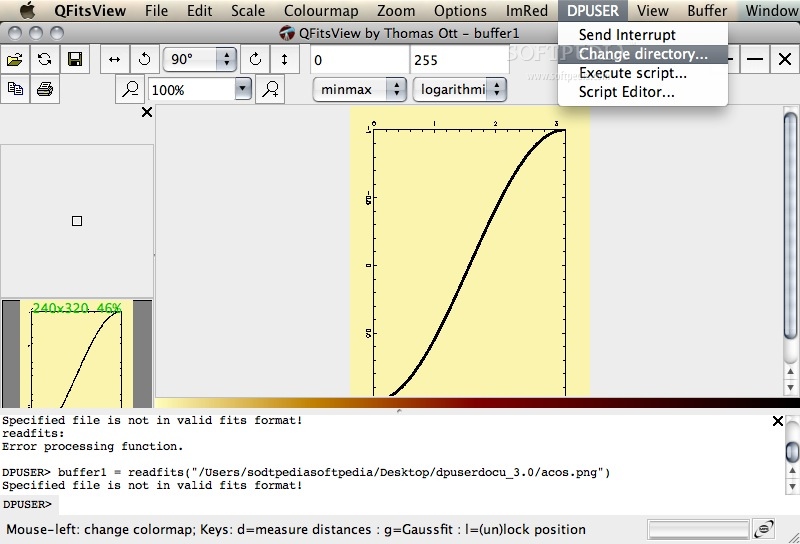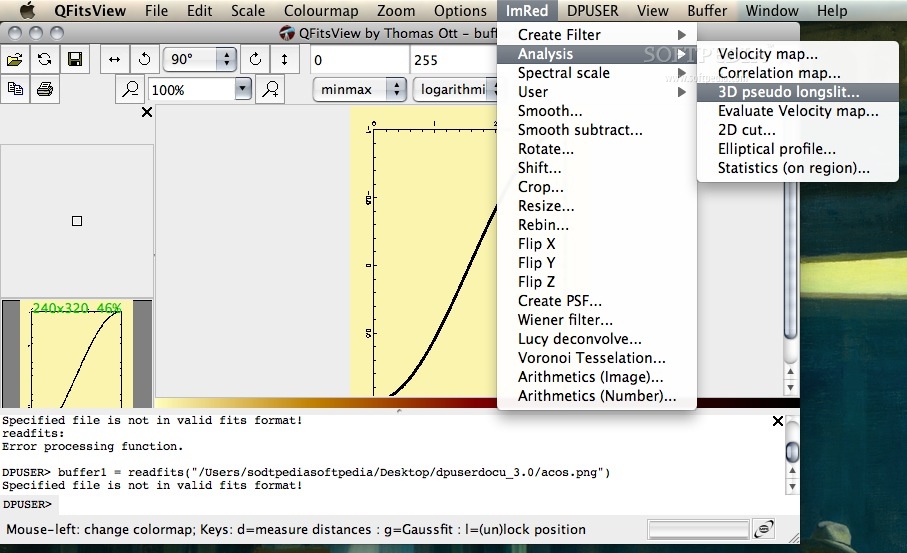

To demonstrate this extensibility, there’s a Used to both control and inspect the images from a slit viewing camera Incoming images and the ability to extend the basic installation, One of the motivating use cases for ztv was real-time quick-look of Z.aperture_phot(xclick=614, yclick=516, show_overplot=True)Īnd, of course, you can adjust the window size to suit your needs, We can even do a little aperture photometry while we’re here: z.cmap('gray') Open(local_filename, 'w').write(zip.open(zip_filename).read())
SAOIMAGE DS9 MAC OS X ZIP
Zip = ZipFile(StringIO(urlopen(remote_url).read())) And, anything you can do from theĭownload an iconic FITS image from the web and display it: from urllib import urlopen Ztv, especially in an exploration-friendly environment like There’s a lot more you can do from the command line if you play with To set up a statistics box and see the GUI output (note that output isĪlso returned to your command line as a dict): z.stats_box(xrange=, yrange=, show_overplot=True) To manipulate display parameters: z.cmap('gist_heat')

The pop-up menu that’s available by right-clicking in the primary image To change cursor mode, press cmd-# where # is the number shown in You can even switch tabs from the command line api, e.g.: z.control_panel('Color') Or, by cmd- to move left/right amongst the Tabs by cmd-alt-# where # is the number of the panel, startingįrom 1. You can also switch amongst the control panel All of these elements are accessible through the You can now look at your data, manipulate display parameters, etc all Im = np.random.normal(size=) # create a 3-d image stack To load an image in a numpy array: import numpy as np If proper FITS header keywords are available, ztv will display the Panel is included that generates faked images in the FITS format.) Plots, statistics, and aperture photometry. setting colormap, stretch, and lower/upper limits - doing basic slice sky or dark) and a flat field frame to divide by Input source (FITS file, auto-reload from FITS file, etc) - selecting aįrame to subtract (e.g. Ztv comes with a number of built-in control panels, for: - selecting Intended to produce publication quality figures. Ztv is intended for real-time display and analysis. ItĬan also receive new images via an ActiveMQ message The most recently acquired image by watching a directory for new FITSįiles to appear or watching a single FITS file for when it changes. Loaded in to numpy arrays, as well as FITS Ztv is useful as-is for display and simple analysis of images already Ztv is an astronomical image viewer designed to be used from a python


 0 kommentar(er)
0 kommentar(er)
